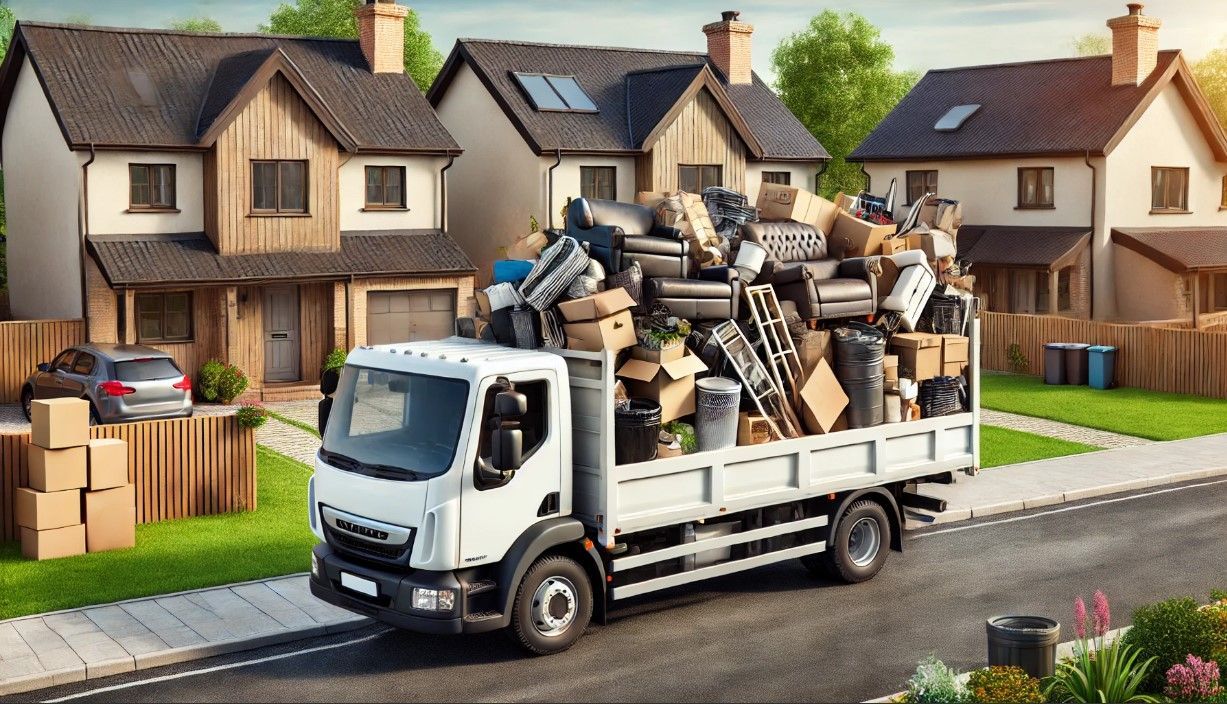
Junk Removal for Landlords – An Essential Guide
Dealing with
leftover junk from tenants
can be one of the most frustrating parts of being a landlord. You want to rent out your property quickly, but clutter and junk can delay the process.
What if you could streamline the cleanup and get your property rent-ready faster? In this article, we’ll explore
how landlords can handle
junk removal
efficiently, saving both time and money, and keeping your properties looking top-notch.
Why Junk Removal Matters for Landlords
As a landlord, having a clean property is crucial for a few reasons:
- Faster Turnaround: A junk-free property can be rented out more quickly, reducing vacancy periods.
- Enhanced Curb Appeal: Clean spaces attract better tenants and often higher rent rates.
- Safety Compliance: Old appliances, trash, or bulky furniture can be safety hazards, making removal essential to keep your property up to code.
How to Handle Junk Removal as a Landlord
1. Plan Ahead with a Junk Removal Policy
Create a junk removal policy and add it to your lease agreement. Outline:
- What is considered "junk" (e.g., furniture, appliances).
- How much time the tenant has to remove their items.
- Fees charged if the landlord has to handle junk removal.
Having a clear policy in place sets expectations for tenants and provides a legal framework if things are left behind.
2. Conduct Thorough Move-Out Inspections
When a tenant moves out, inspect the property immediately. Look for:
- Bulky Items: Couches, mattresses, or large appliances.
- Trash Buildup: Boxes, bags of trash, and any left-behind clutter.
- Safety Hazards: Broken items that could pose a risk, like glass or sharp metal.
This step helps you identify how much junk removal is necessary and prevents any delays in preparing the property for new tenants.
3. Choose the Right Junk Removal Service
Not all junk removal companies are the same. Consider:
- Full-Service vs. DIY Hauling: Full-service will come, pick up the items, and dispose of them properly. DIY hauling involves renting a truck or dumpster and doing it yourself.
- Environmental Impact: Look for services that recycle or donate items whenever possible.
- Cost and Convenience:
Compare prices and availability. Some companies offer same-day services, which can be a lifesaver when you’re on a tight schedule.
| Criteria | Full-Service | DIY Hauling |
|---|---|---|
| Convenience | High | Low |
| Cost | Higher | Lower |
| Speed of Service | Fast (same-day option) | Slower |
| Effort Required | Minimal | High |
4. Calculate the Cost of Junk Removal
Costs vary depending on:
- Volume of Junk: More items generally mean higher costs.
- Type of Junk: Hazardous materials, electronics, or large appliances may incur additional fees.
- Service Level: Full-service options will be pricier than renting a dumpster for self-haul.
On average, expect to pay $100 to $500 for junk removal, but prices can vary greatly based on your location and the amount of junk.
5. Get Creative with Junk Removal Solutions
To save costs or make the process more efficient, consider these options:
- Bulk Pickup Days: Many cities have designated days for free or low-cost bulk trash pickup.
- Donation Services: Items in good condition can be picked up for free by donation services.
- Local Scrap Collectors: If you have metal items or old appliances, local collectors may take them for free.
Benefits of Professional Junk Removal
Hiring a professional junk removal service has its perks:
- Time-Saving: They handle all the heavy lifting and transportation.
- Stress-Free Process: No need to worry about proper disposal or recycling.
- Insurance & Safety: Professional teams are trained to handle hazardous items safely, reducing liability.
Frequently Asked Questions (FAQs)
1. How quickly should junk be removed after a tenant moves out?
Ideally, junk should be removed within a week to avoid long vacancy periods and maintain property appeal.
2. Can the cost of junk removal be deducted from a tenant’s security deposit?
Yes, if junk removal is necessary due to tenant negligence or failure to clear the property, the cost can often be deducted from their security deposit. Make sure this is stated in your lease.
3. What happens if tenants leave behind hazardous items?
If tenants leave behind hazardous items (e.g., chemicals, electronics), it's best to hire a professional service. They know how to handle and dispose of such items safely.
4. Is it possible to DIY junk removal?
Yes, DIY junk removal is possible if you have the time, vehicle, and manpower. However, it can be time-consuming and may require proper disposal knowledge for certain items.
5 Tips to Make Junk Removal Easier for Landlords
- Set Clear Lease Terms: Define junk removal responsibilities upfront in the lease.
- Communicate Early: Send reminders about move-out procedures a month before the lease ends.
- Provide Resources: Share information on donation centers and bulk pickup schedules with tenants.
- Do Regular Inspections: Conduct mid-lease inspections to avoid junk buildup.
- Use a Junk Removal App: Some apps connect you to local removal services for quick and easy pickups.
Final Thoughts on Junk Removal for Landlords
Junk removal is an unavoidable aspect of being a landlord, but with the right planning and resources, it doesn’t have to be a headache. By setting clear expectations, conducting regular inspections, and using professional services when needed, you can keep your properties clean, safe, and rent-ready.
If you’re ready to streamline your junk removal process, start by reviewing your lease agreements and getting quotes from local junk removal services. A clean property is a profitable property.
Contact us
If you have any questions or need any assistance after business hours, please get in touch.
Phone
BUSINESS HOURS
- Mon - Sat
- -
- Sunday
- -

We will get back to you as soon as possible.
Please try again later.
All Rights Reserved | Gabriel’s Hauling & Junk Removal Services
